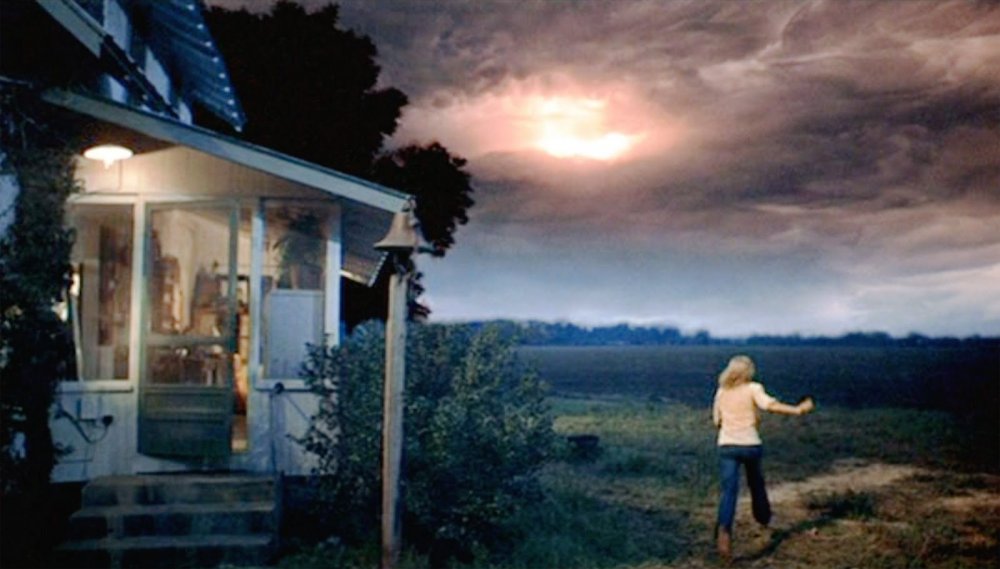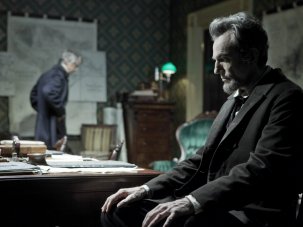With his twenty-eighth theatrical feature, Bridge of Spies (2015), now on general release, this seems an appropriate time to address the apparent conundrum posed by Steven Spielberg. Like the equally prolific Woody Allen, whose output is often divided between ‘early funny ones’ and more serious offerings, Spielberg’s work is frequently discussed in terms of a split between the entertainments on which his reputation was initially based and increasingly prominent attempts to create serious (if middlebrow) art.
Yet different oppositions seem equally plausible; on the one hand, for example, those films which revel in gleeful destruction, on the other those in which the protagonist is attempting to restore all or part of a family unit. Saving Private Ryan (1998) subjects this restoration project to extensive criticism, not just through the cynicism with which the mission to reunite Ryan and his mother is regarded, but also via Wade’s speech about pretending to be asleep when his mother returned home early (“I don’t know why I did that”). This dialogue conveys a powerful ambivalence about familial relations also present in Catch Me If You Can (2002), wherein Frank Abagnale’s determination to compensate for humiliations suffered by his father is linked with a recreation of the primal scene (Frank sees his parents dancing over a red stain caused by his mother spilling some wine).
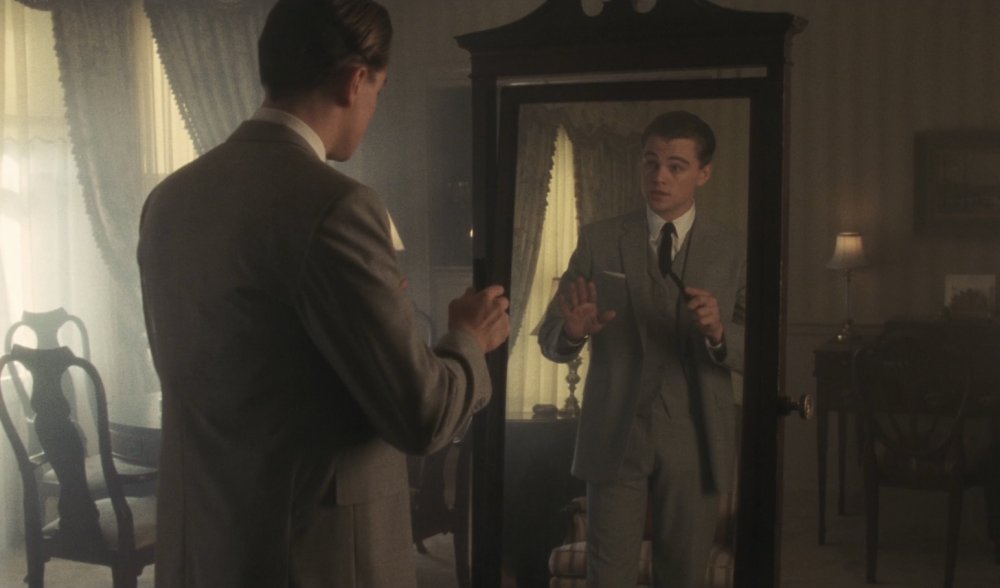
Catch Me If You Can (2002)
In the bluntly Freudian Minority Report (2002), John Anderton (Tom Cruise) is betrayed by a father figure, Lamar Burgess (Max von Sydow), and kissed on the lips by a mother figure, Iris Hineman (Lois Smith), the latter event being anticipated by a scene in which Anderton watches a hologram recording of his dead son insisting “Only Mommy kisses me on the lips”. Similarly, A.I. (2001) generates a disparity between the banality of David (Haley Joel Osment)’s Oedipal trajectory, and the sheer excess of the spectacle required to achieve it.
The male child’s climactic reunion with his mother is clearly of special importance to Spielberg, being traceable all the way back to the early television movie Something Evil (1971), but, unlike John Ford or Francis Coppola, he only really seems interested in families when they need to be either defended or restored; the joy in destruction which distinguishes 1941 (1979), Raiders of the Lost Ark (1981) and Jurassic Park (1993) is the flip side of that passionate urge to repair the damage caused.
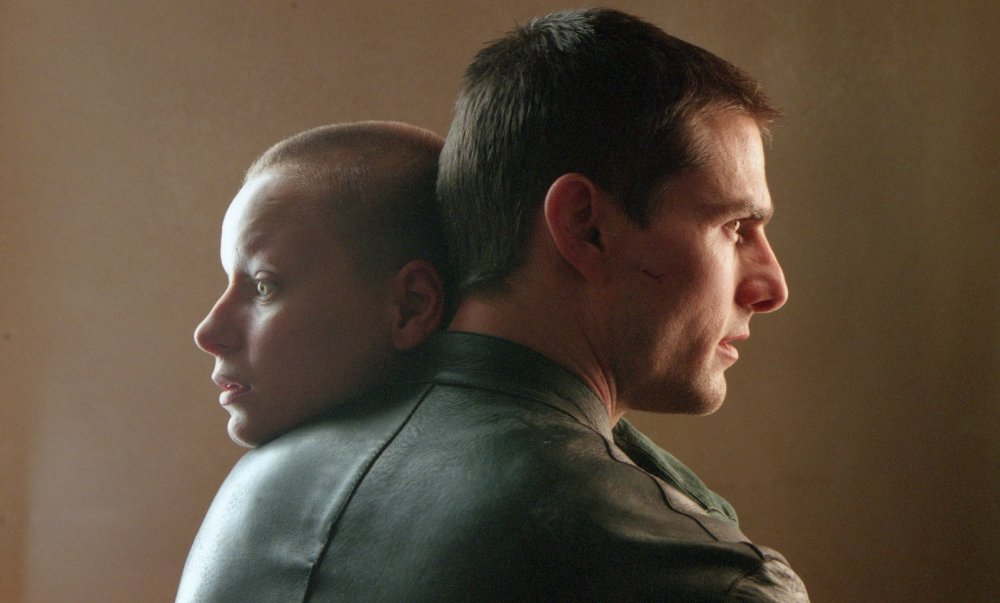
Minority Report (2002)
Spielberg often emphasises the act of storytelling (Munich (2005) and Amistad (1997) explicitly link it with survival), and his tales of restoration often involve literary texts (Peter Pan in E.T. (1982), Pinocchio in A.I.), as well as cinematic references which stress how films can be used as either aids to communication or models to emulate (the drive-in sequence in The Sugarland Express (1974), Frank’s attempt to imitate James Bond in Catch Me If You Can, E.T.’s use of The Quiet Man). Empire of the Sun (1987), with its barrage of cinematic metaphors, even demonstrates the kind of modernist concern Spielberg’s output is thought to be lacking. But this concern is evident on a much deeper level in a group of films which present narrative itself as problematic.
Close Encounters of the Third Kind (1977), Hook (1991) and Schindler’s List (1993) all focus on protagonists who, far from being goal-oriented in the manner typical of mainstream Hollywood, have difficulty grasping their narrative function. Close Encounters and Schindler, despite being opposed as entertainment and art, make for a particularly neat paring. In both films, the protagonist is introduced indirectly: we see the toy trains belonging to Roy Neary (Richard Dreyfuss) before seeing Neary himself (at least in the original version of Close Encounters), and are shown Schindler’s cufflinks, tie, handkerchiefs, watch and Nazi pin before his face is revealed (this view of masculinity as something to be approached with caution is also there in E.T., which withholds our first view of an adult male’s face).
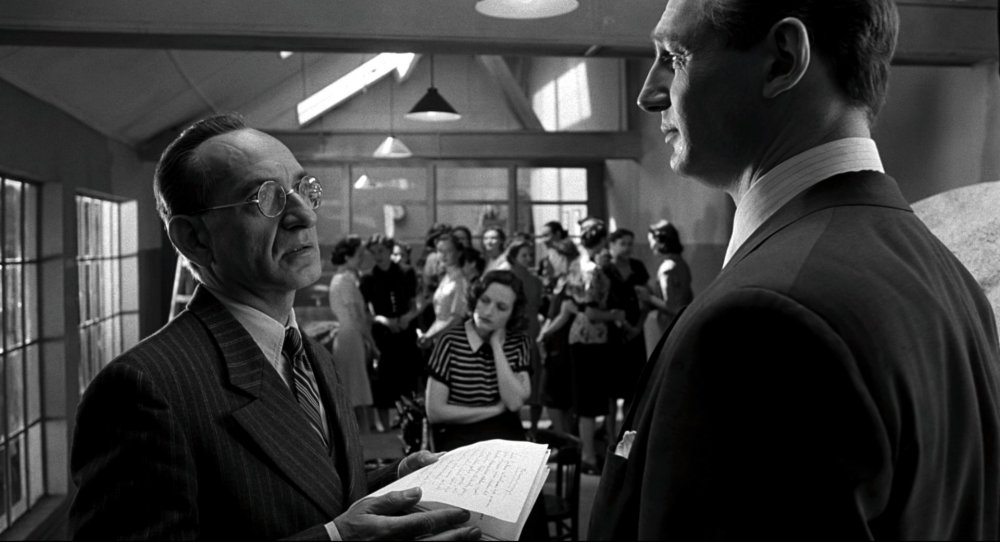
Schindler’s List (1993)
These films reinforce the hero’s tentative state by juxtaposing scenes involving the protagonist with scenes in which he does not appear. Tormented by the image of Devils Tower aliens have planted in his mind, Neary spends much of Close Encounters searching for a comprehensible narrative role, approaching insanity as he constructs facsimiles of the mountain from whatever materials come to hand. Neary only takes centre stage once he realises the mountain is actually a meeting point, a realisation which allows him to pursue his project in the face of merely external opposition. Similarly, Schindler (Liam Neeson) comes close to vanishing completely as soon as his secret sharer Amon Goeth (Ralph Fiennes) is introduced; indeed, for 30 minutes of screen time he appears only fleetingly as a silent observer. He will not be able to wrest control of the narrative back from Goeth until he comprehends what his project should be: to protect and restore a community threatened with annihilation.
The fact that Schindler’s project is dedicated to the family’s preservation while Neary’s is dedicated to its destruction/abandonment (the character’s obsessive behaviour drives away his wife and children, his decision to board the alien ship decisively eliminating all hope of reconciliation) suggests restoration may be of less importance to Spielberg than it might at first appear, his fluctuations between destruction and reconstruction being merely the surface expression of an ambivalence towards narrative itself, a determination to interrogate those assumptions that make fiction possible.
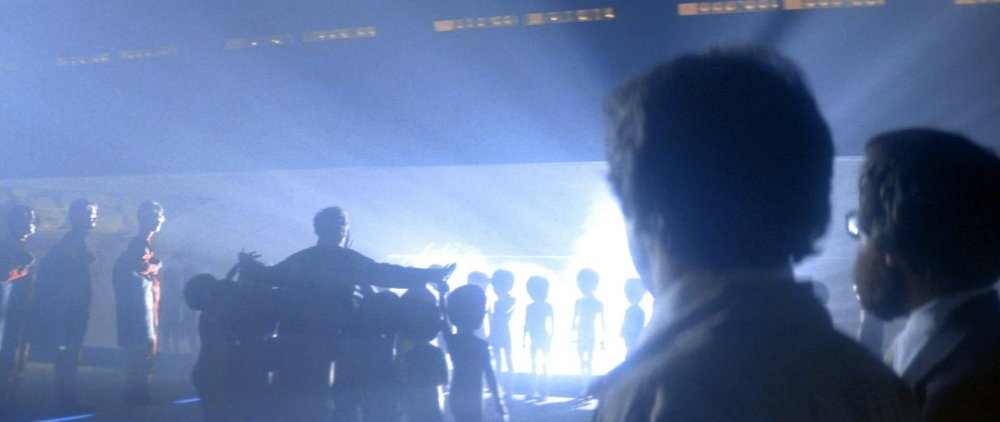
Close Encounters of the Third Kind (1977)
The discovery of modernist tendencies in a filmmaker generally seen as a classicist does not detract from, and may even reinforce, Spielberg’s status as a great popular artist. Schindler’s List takes leave of its protagonist in much the same way as Close Encounters; Neary is last seen surrounded by aliens who have drawn him into a welcoming embrace, while Schindler vanishes after being embraced by a group of Jews whose lives he has saved, leaving the film to play itself out by means of a coda (Holocaust survivors approaching Schindler’s grave in the company of the actors who portrayed them) in which the line between fiction and documentary is erased.
Those communal embraces which provide our last glimpses of Neary and Schindler suggest the true nature of Spielberg’s ambitions. The breaking down of barriers – between destruction and restoration, fiction and documentary, art and entertainment, classicism and modernism – finds its supreme expression in the erasure of the line between artist and audience. As one of the last proponents of a genuinely popular American cinema (which is to say a cinema not entirely dedicated to corporate values), Spielberg addresses viewers willing to accept the communal caress his films offer, but also reaches out for a community of spectators into whose embrace he can himself happily disappear.
In the December 2015 issue of Sight & Sound
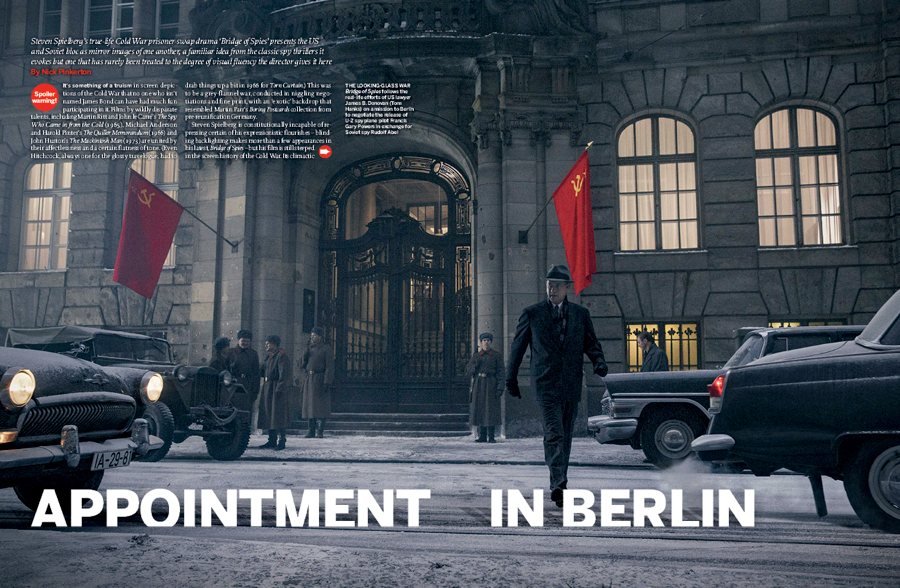
Appointment in Berlin
Steven Spielberg’s true-life Cold War prisoner-swap drama Bridge of Spies presents the US and Soviet bloc as mirror images of one another, a familiar idea from the classic spy thrillers it evokes but one that has rarely been treated to the degree of visual fluency the director gives it here. By Nick Pinkerton.
+ Bridge of Spies reviewed by Michael Atkinson.
-
The Digital Edition and Archive quick link
Log in here to your digital edition and archive subscription, take a look at the packages on offer and buy a subscription.




